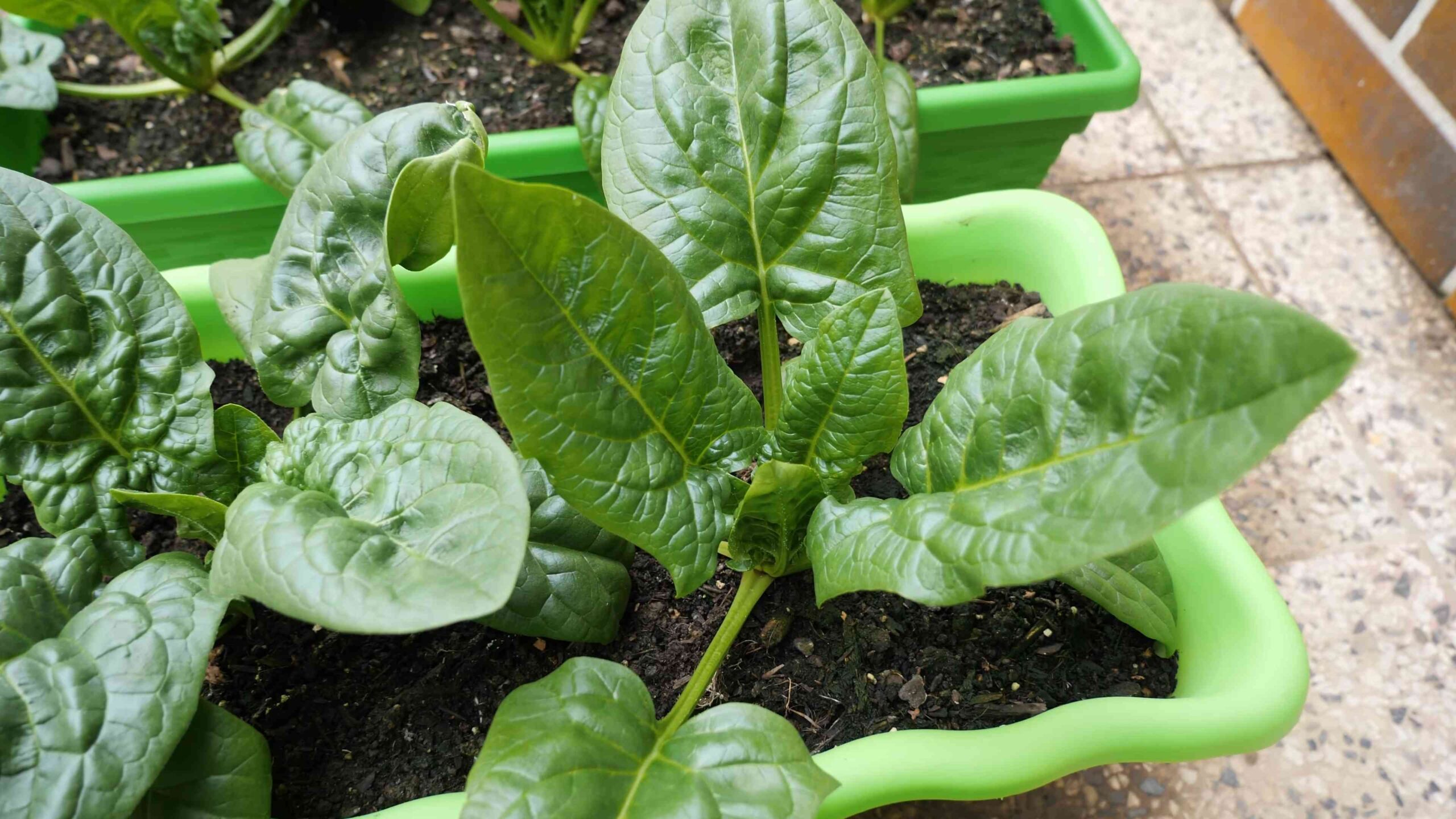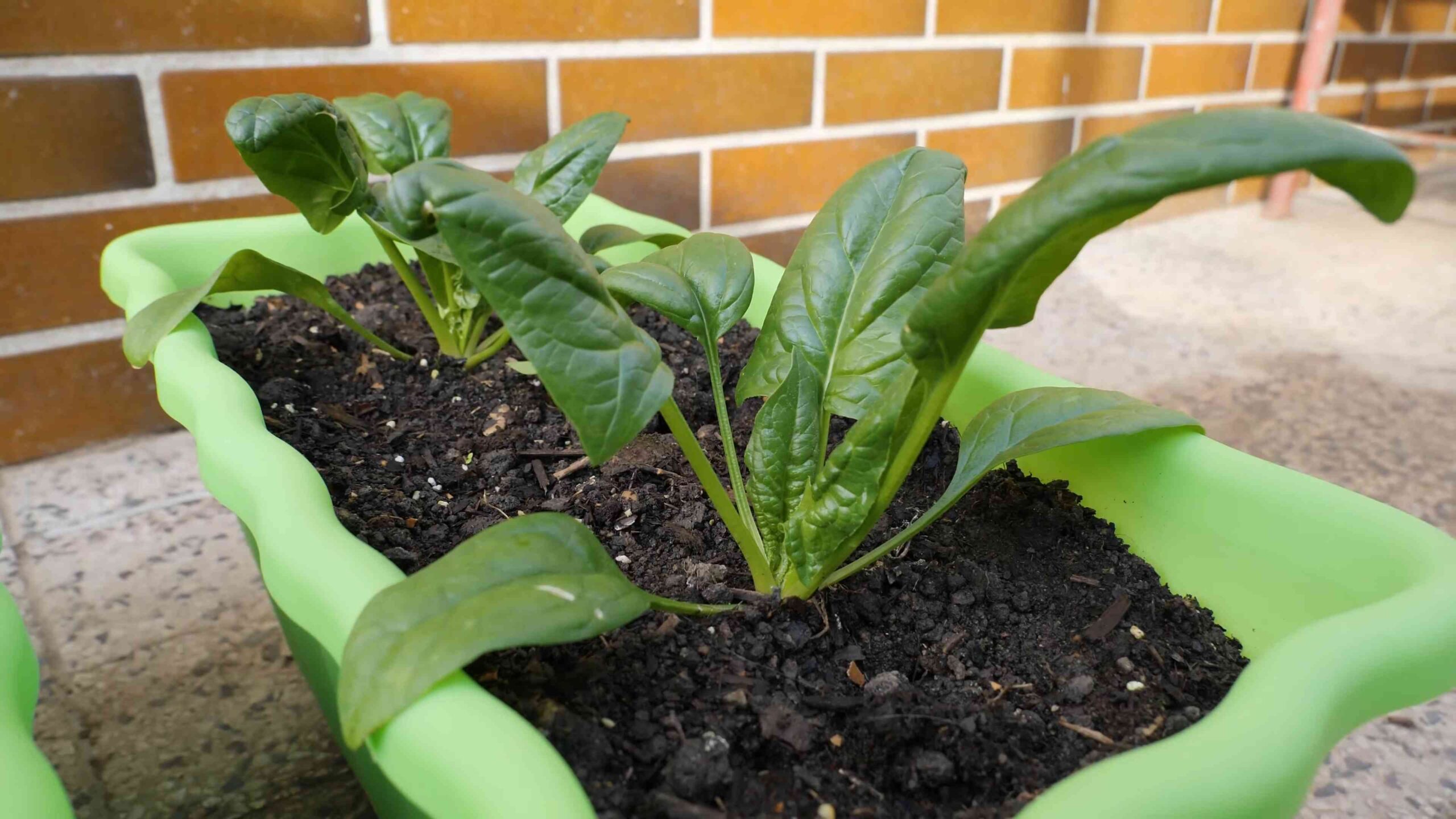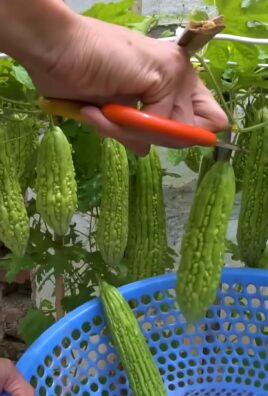Grow Spinach at Home? Absolutely! Imagine stepping into your backyard and harvesting fresh, vibrant spinach leaves for your salad, smoothie, or favorite dish. No more trips to the grocery store, no more worrying about pesticides – just pure, homegrown goodness. For centuries, spinach has been cultivated for its nutritional power, dating back to ancient Persia. It even gained immense popularity in the 1930s thanks to Popeye the Sailor Man, who attributed his strength to this leafy green!
But beyond its historical significance, learning to grow spinach at home is a game-changer for anyone looking to embrace a healthier and more sustainable lifestyle. Let’s face it, store-bought spinach can be expensive and often lacks the freshness and flavor of homegrown varieties. Plus, with a few simple DIY tricks, you can avoid the chemicals and preservatives often found in commercially grown produce.
In this article, I’m going to share my favorite DIY hacks and tips to help you cultivate a thriving spinach patch, even if you have limited space or gardening experience. Get ready to unlock the secrets to a bountiful harvest and enjoy the delicious rewards of your own green thumb!

Grow Your Own Spinach: A Beginner’s Guide to a Bountiful Harvest
Hey there, fellow gardening enthusiasts! I’m so excited to share my experience and guide you through growing your own spinach at home. It’s easier than you think, and nothing beats the taste of fresh, homegrown spinach in your salads, smoothies, or cooked dishes. Let’s get started!
Choosing the Right Spinach Variety
Before we dive into the nitty-gritty, let’s talk about spinach varieties. There are a few different types, and choosing the right one for your climate and preferences is key.
* Savoy Spinach: This type has crinkled, curly leaves. It’s cold-hardy and great for fall and winter harvests. Examples include ‘Bloomsdale’ and ‘Melody’.
* Semi-Savoy Spinach: A good compromise between savoy and smooth-leaf varieties. It’s slightly crinkled and offers good disease resistance. ‘Tyee’ is a popular choice.
* Smooth-Leaf Spinach: As the name suggests, this type has smooth leaves, making it easier to wash. It’s often preferred for processing and salads. ‘Space’ and ‘Giant Nobel’ are excellent options.
* Baby Spinach: Not a specific variety, but rather spinach harvested at a young stage. Any of the above varieties can be grown as baby spinach.
I personally love growing ‘Bloomsdale’ for its robust flavor and cold hardiness, and ‘Space’ for its smooth leaves and ease of cleaning. Experiment and see which one you like best!
Preparing the Soil
Spinach thrives in well-drained soil that’s rich in organic matter. Here’s how to get your soil ready:
* Soil Testing: Ideally, you should test your soil’s pH. Spinach prefers a pH between 6.5 and 7.0. You can buy a soil testing kit at most garden centers or send a sample to your local agricultural extension office.
* Amending the Soil: If your soil is too acidic (pH below 6.5), add lime to raise the pH. If it’s too alkaline (pH above 7.0), add sulfur to lower the pH.
* Adding Organic Matter: Incorporate plenty of compost, well-rotted manure, or other organic matter into the soil. This will improve drainage, water retention, and nutrient availability. I usually add a generous layer of compost (about 2-3 inches) and work it into the top 6-8 inches of soil.
* Fertilizing: Spinach is a heavy feeder, so it benefits from a balanced fertilizer. I like to use a slow-release organic fertilizer with an NPK ratio of around 10-10-10. Follow the instructions on the fertilizer package for application rates.
Planting Spinach Seeds
Spinach is a cool-season crop, so the best time to plant it is in early spring or early fall.
* Timing: In the spring, plant spinach as soon as the soil can be worked. In the fall, plant it about 4-6 weeks before the first expected frost.
* Direct Sowing: Spinach is best direct-sown, meaning you plant the seeds directly into the garden bed. It doesn’t transplant well.
* Sowing Depth: Sow the seeds about ½ inch deep and 1 inch apart.
* Row Spacing: Space the rows about 12-18 inches apart.
* Watering: Water the soil gently after planting to keep it moist.
Pro Tip: Soaking the spinach seeds in water for 24 hours before planting can improve germination rates.
Caring for Your Spinach Plants
Once your spinach seeds have germinated, it’s time to provide them with the care they need to thrive.
* Watering: Keep the soil consistently moist, but not waterlogged. Water deeply whenever the top inch of soil feels dry.
* Thinning: Once the seedlings are a few inches tall, thin them to about 3-6 inches apart. This will give them enough room to grow and prevent overcrowding. You can eat the thinnings as baby spinach!
* Weeding: Keep the garden bed free of weeds, as they can compete with the spinach plants for nutrients and water. Hand-pull weeds carefully to avoid disturbing the spinach roots.
* Fertilizing: Side-dress the spinach plants with a nitrogen-rich fertilizer every few weeks to encourage leafy growth. I like to use fish emulsion or compost tea.
* Pest Control: Spinach is relatively pest-resistant, but it can be susceptible to aphids, flea beetles, and leaf miners. Inspect your plants regularly for signs of pests and take action if necessary.
* Aphids: Spray the plants with a strong stream of water or use insecticidal soap.
* Flea Beetles: Cover the plants with row covers to prevent flea beetles from reaching them.
* Leaf Miners: Remove and destroy any leaves that are infested with leaf miners.
* Bolting Prevention: Bolting is when spinach plants send up a flower stalk and the leaves become bitter. This is usually triggered by hot weather or long days. To prevent bolting:
* Plant spinach in a shady location, especially during the summer months.
* Water the plants regularly to keep them cool.
* Harvest the spinach leaves frequently to encourage continued leaf production.
* Choose bolt-resistant varieties.
Harvesting Your Spinach
You can start harvesting spinach leaves as soon as they are large enough to eat, usually about 4-6 weeks after planting.
* Harvesting Method: You can harvest the entire plant at once by cutting it off at the base, or you can harvest individual leaves as needed. I prefer to harvest individual leaves, as this allows the plant to continue producing new leaves.
* Harvesting Time: Harvest spinach in the morning, when the leaves are crisp and cool.
* Storage: Store spinach in the refrigerator in a plastic bag or container. It will keep for several days.
Step-by-Step Instructions: Growing Spinach from Seed
Okay, let’s break down the entire process into easy-to-follow steps:
1. Choose Your Variety: Decide which spinach variety you want to grow based on your climate and preferences.
2. Prepare the Soil: Test your soil’s pH and amend it as needed. Incorporate plenty of compost or other organic matter into the soil. Add a balanced fertilizer.
3. Plant the Seeds: Sow the spinach seeds about ½ inch deep and 1 inch apart in rows that are 12-18 inches apart.
4. Water the Soil: Water the soil gently after planting to keep it moist.
5. Wait for Germination: Spinach seeds usually germinate in 5-10 days.
6. Thin the Seedlings: Once the seedlings are a few inches tall, thin them to about 3-6 inches apart.
7. Water Regularly: Keep the soil consistently moist, but not waterlogged.
8. Weed the Garden Bed: Keep the garden bed free of weeds.
9. Fertilize: Side-dress the spinach plants with a nitrogen-rich fertilizer every few weeks.
10. Monitor for Pests: Inspect your plants regularly for signs of pests and take action if necessary.
11. Prevent Bolting: Take steps to prevent bolting, such as planting in a shady location and watering regularly.
12. Harvest the Spinach: Harvest the spinach leaves as soon as they are large enough to eat.
Troubleshooting Common Spinach Problems
Even with the best care, you might encounter some problems while growing spinach. Here are a few common issues and how to address them:
* Poor Germination: If your spinach seeds aren’t germinating well, make sure the soil is moist and not too cold. You can also try soaking the seeds in water for 24 hours before planting.
* Yellowing Leaves: Yellowing leaves can be a sign of nutrient deficiency, especially nitrogen. Side-dress the plants with a nitrogen-rich fertilizer.
* Stunted Growth: Stunted growth can be caused by poor soil, lack of water, or pests. Make sure the soil is well-drained and rich in organic matter, water the plants regularly, and control any pests.
* Bolting: As mentioned earlier, bolting is when spinach plants send up a flower stalk and the leaves become bitter. Prevent bolting by planting in a shady location, watering regularly, and harvesting the leaves frequently.
Enjoying Your Homegrown Spinach
Now that you’ve successfully grown your own spinach, it’s time to enjoy the fruits (or rather, leaves!) of your labor. Here are a few ideas:
* Salads: Add fresh spinach leaves to your favorite salads.
* Smoothies: Blend spinach into your smoothies for

Conclusion
So, there you have it! Growing spinach at home is not only achievable, but it’s also incredibly rewarding. From the crisp, fresh taste that far surpasses anything you’ll find in a grocery store, to the sheer satisfaction of nurturing your own food, this DIY project is a game-changer for any home cook or gardening enthusiast. Forget those wilted, pre-packaged greens – imagine stepping into your garden or onto your balcony and harvesting vibrant, nutrient-packed spinach leaves whenever you need them.
This isn’t just about saving money (though that’s a definite perk!). It’s about connecting with your food, understanding its journey from seed to plate, and enjoying the unparalleled flavor of truly fresh produce. Plus, you have complete control over the growing process, ensuring that your spinach is free from harmful pesticides and chemicals.
Why is this DIY trick a must-try? Because it empowers you to enjoy fresh, healthy spinach year-round, regardless of your location or the season. It’s a sustainable and cost-effective way to enhance your meals and boost your well-being. And let’s be honest, there’s something incredibly therapeutic about tending to a garden, even a small one.
Feeling adventurous? Try experimenting with different varieties of spinach! Some are better suited for warmer climates, while others thrive in cooler temperatures. Explore heirloom varieties for unique flavors and textures. You can also try companion planting – basil, chamomile, and marigolds are known to deter pests and improve the growth of spinach. Consider succession planting, sowing new seeds every few weeks, to ensure a continuous harvest throughout the growing season.
Don’t be afraid to get your hands dirty and embrace the learning process. Gardening is all about experimentation and adapting to your specific environment. Even if you encounter a few challenges along the way, the ultimate reward – a bountiful harvest of delicious, homegrown spinach – is well worth the effort.
We wholeheartedly encourage you to give this DIY trick a try. Start small, be patient, and most importantly, have fun! Once you’ve experienced the joy of growing your own spinach, you’ll never look at store-bought greens the same way again.
And we want to hear about your experiences! Share your tips, tricks, and triumphs in the comments below. Let us know what varieties you’ve tried, what challenges you’ve overcome, and what delicious dishes you’ve created with your homegrown spinach. Together, we can build a community of passionate home gardeners and inspire others to embrace the joys of growing their own food. So go ahead, get planting, and let the spinach-growing adventures begin! Remember, the freshest, most flavorful spinach is the spinach you grow yourself.
Frequently Asked Questions (FAQ)
What is the best time of year to plant spinach?
Spinach is a cool-season crop, meaning it thrives in cooler temperatures. The best time to plant spinach is typically in early spring or early fall. For a spring crop, sow seeds as soon as the ground can be worked, usually 4-6 weeks before the last expected frost. For a fall crop, plant seeds 6-8 weeks before the first expected frost. In warmer climates, you can grow spinach throughout the winter. Avoid planting during the hottest months of summer, as high temperatures can cause spinach to bolt (go to seed), resulting in bitter-tasting leaves.
How much sunlight does spinach need?
Spinach needs at least 3-6 hours of direct sunlight per day. While it can tolerate some shade, especially in warmer climates, insufficient sunlight can result in leggy growth and reduced yields. If you’re growing spinach indoors, provide supplemental lighting with grow lights to ensure adequate light exposure.
What kind of soil is best for growing spinach?
Spinach prefers well-drained soil that is rich in organic matter. The ideal soil pH is between 6.5 and 7.0. Before planting, amend the soil with compost or well-rotted manure to improve its fertility and drainage. Avoid soils that are heavy clay or prone to waterlogging, as these can lead to root rot.
How often should I water spinach?
Spinach needs consistent moisture to thrive. Water deeply and regularly, especially during dry periods. Aim to keep the soil consistently moist but not waterlogged. Check the soil moisture regularly by sticking your finger into the soil – if the top inch feels dry, it’s time to water. Mulching around the plants can help retain moisture and suppress weeds.
How do I prevent spinach from bolting?
Bolting, or going to seed, is a common problem with spinach, especially in warmer weather. To prevent bolting, choose bolt-resistant varieties, plant in partial shade during the hottest months, and water regularly to keep the soil cool and moist. Harvesting leaves regularly can also help delay bolting.
What are some common pests and diseases that affect spinach?
Common pests that affect spinach include aphids, leaf miners, and flea beetles. Diseases include downy mildew, white rust, and damping-off. To prevent pest and disease problems, practice good garden hygiene, such as removing weeds and debris, and rotate crops regularly. Use organic pest control methods, such as insecticidal soap or neem oil, to control pests. Ensure good air circulation to prevent fungal diseases.
How do I harvest spinach?
You can begin harvesting spinach leaves as soon as they are large enough to eat, typically when they are 4-6 inches long. Harvest outer leaves first, leaving the inner leaves to continue growing. You can also harvest the entire plant at once by cutting it off at the base. Regular harvesting encourages continued leaf production.
Can I grow spinach in containers?
Yes, spinach grows well in containers. Choose a container that is at least 6-8 inches deep and has drainage holes. Use a high-quality potting mix and provide adequate sunlight and water. Container-grown spinach may need more frequent watering and fertilization than spinach grown in the ground.
How do I fertilize spinach?
Spinach is a heavy feeder and benefits from regular fertilization. Apply a balanced organic fertilizer, such as compost tea or fish emulsion, every 2-3 weeks. Avoid over-fertilizing, as this can lead to excessive leaf growth and reduced flavor.
What are some creative ways to use homegrown spinach?
The possibilities are endless! Beyond salads, add spinach to smoothies, soups, stews, omelets, and pasta dishes. Sauté it with garlic and olive oil for a simple side dish. Use it as a filling for ravioli or lasagna. Blend it into pesto. Or even add it to baked goods like muffins or bread for a boost of nutrients. Don’t be afraid to experiment and discover your own favorite ways to enjoy your homegrown spinach!





Leave a Comment